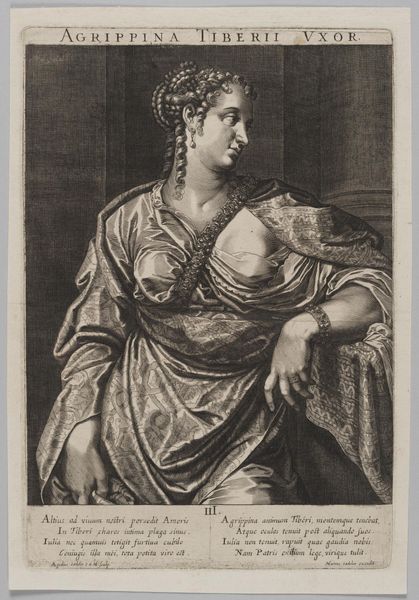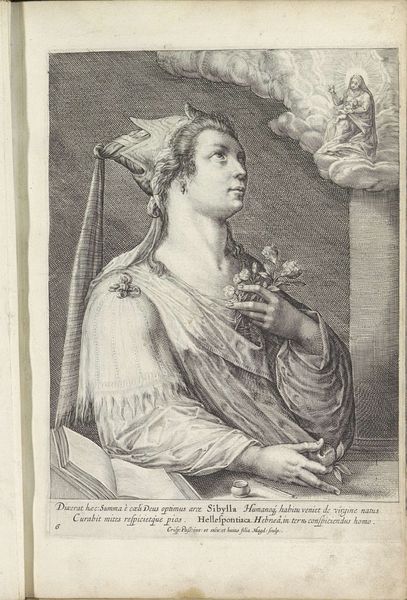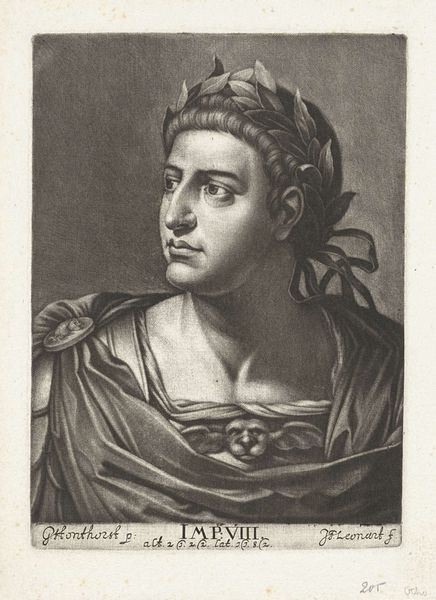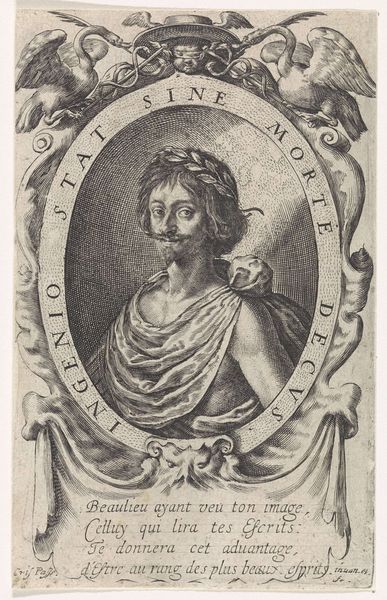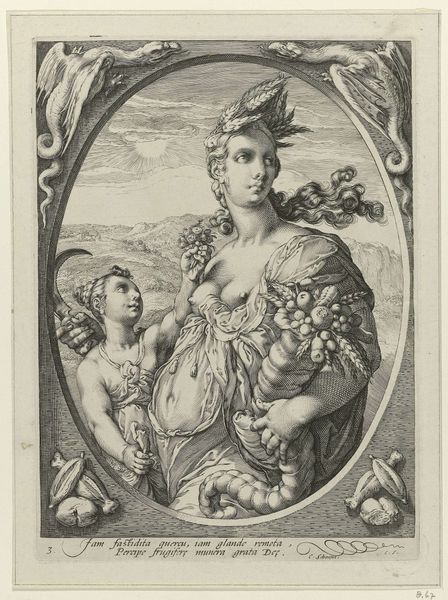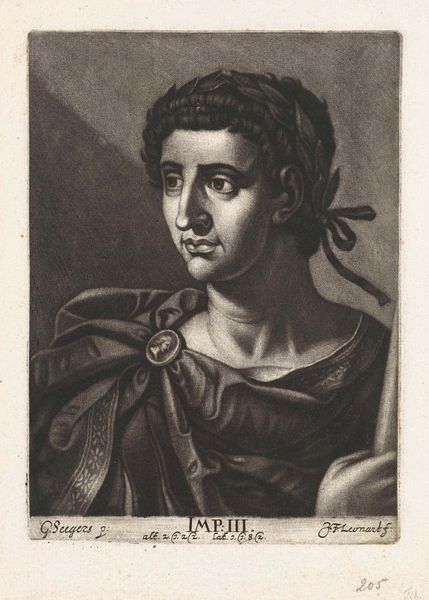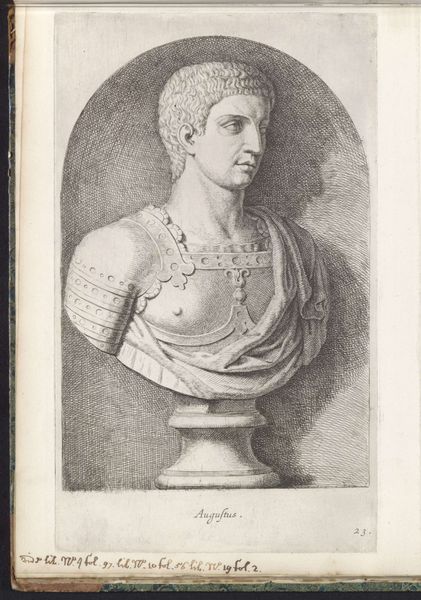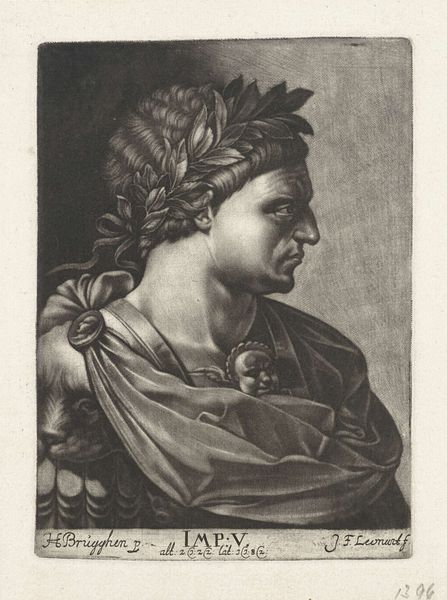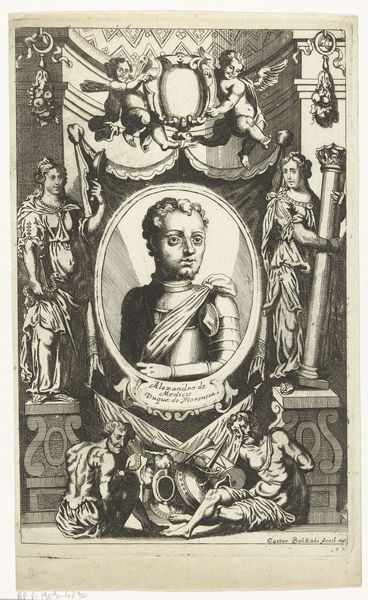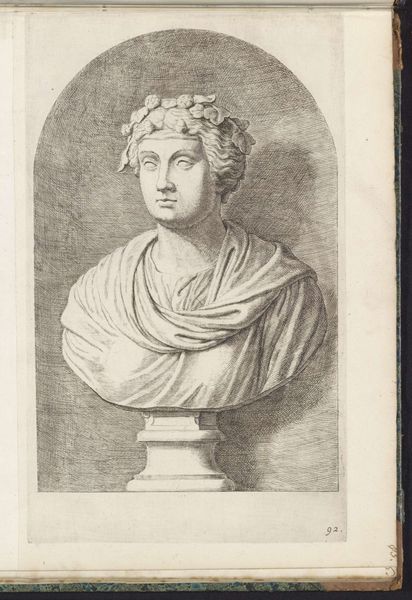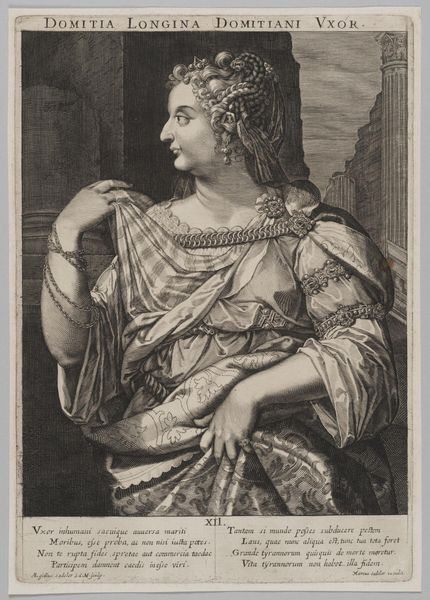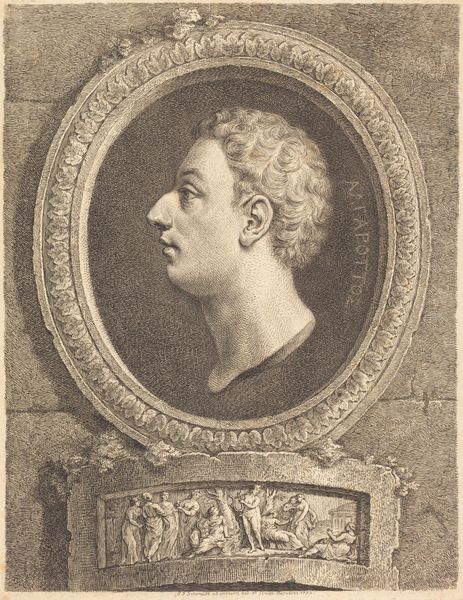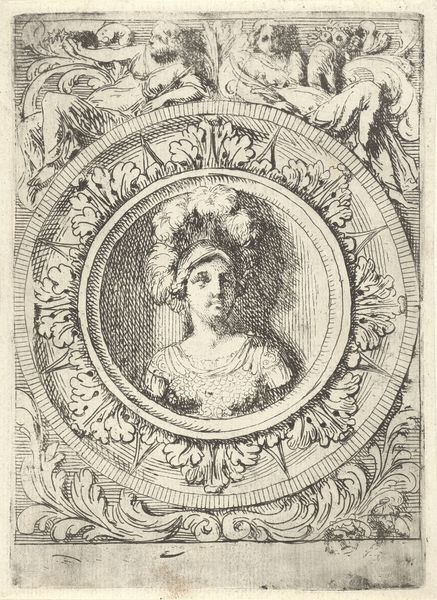
drawing, print, engraving
#
portrait
#
drawing
# print
#
pencil sketch
#
caricature
#
classical-realism
#
charcoal drawing
#
portrait reference
#
pencil drawing
#
geometric
#
surrealism
#
portrait drawing
#
history-painting
#
academic-art
#
engraving
Dimensions: height 242 mm, width 189 mm
Copyright: Rijks Museum: Open Domain
Pieter Anthony Wakkerdak created this print of a bust of Emperor Augustus in the mid-18th century. The very act of creating such a work during this time invites an examination of the enduring influence of classical antiquity. Here, the imagery creates meaning through visual codes that reference Imperial Rome. The figure is draped in classical garb and presented as a bust. The inclusion of the cherubic figure with a laurel wreath, along with the architectural archway, evokes a sense of grandeur, power, and historical continuity. This was a period in the Dutch Republic when the memory of the Roman Empire was frequently invoked to lend authority to contemporary political structures. The image may function as a comment on the contemporary social structures of 18th-century Netherlands, perhaps self-consciously conservative. By looking at the prints and popular imagery of Wakkerdak's time, we can begin to understand how art played a role in shaping and reflecting the social and institutional contexts of the era.
Comments
No comments
Be the first to comment and join the conversation on the ultimate creative platform.
